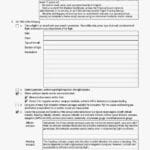Understanding Dilution Calculations
Have you ever made iced tea from concentrate? If so, you’ve already performed a dilution! Diluting a solution involves reducing its concentration by adding more solvent (like water). This seemingly simple process is governed by a fundamental equation in chemistry: C1V1 = C2V2. This formula isn’t just for lab coats and beakers; it has practical applications in cooking, gardening, healthcare, photography, and more. Let’s explore this essential tool and unlock its power.
Decoding the C1V1 = C2V2 Formula
The C1V1 = C2V2 equation is a simple yet powerful expression of the principle of conservation of mass. It essentially suggests that the amount of solute (the substance being dissolved) remains constant even when the concentration changes. Here’s what each component represents:
- C1: Initial concentration of the stock solution. Units are crucial (e.g., Molarity (M), mol/L, %, ppm, etc.)
- V1: Initial volume of the stock solution. Units must be consistent with V2 (e.g., Liters, milliliters, etc.)
- C2: Final concentration of the diluted solution. Units must be consistent with C1.
- V2: Final volume of the diluted solution. Units must be consistent with V1.
Key Point: The formula indicates that the amount of solute present in the initial volume (C1V1) equals the amount of solute in the final volume (C2V2).
Applying the Formula: A Step-by-Step Guide
Using C1V1 = C2V2 is like following a simple recipe:
- Identify the Knowns and Unknowns: Determine which values you’re given (C1, V1, C2, or V2) and what you need to calculate.
- Rearrange the Equation: Isolate the unknown variable. For example, to find V1, rearrange to: V1 = (C2V2) / C1.
- Plug in the Values and Solve: Substitute the known values with consistent units.
- Verify Your Answer: Does your result make sense within the problem’s context? If you’re diluting, V2 should be larger than V1.
Real-World Applications: Beyond the Lab
The C1V1 = C2V2 formula finds application in numerous fields:
- Cooking: Adjusting the strength of a sauce by adding broth.
- Gardening: Mixing fertilizer to the correct concentration.
- Healthcare: Preparing medications and solutions for treatment.
- Photography: Diluting developing chemicals for optimal results.
- Camping Merit Badge Workbook: Even preparing solutions for cleaning or first aid in the wilderness can utilize these principles.
Common Pitfalls and How to Avoid Them
While the formula is straightforward, some common mistakes can occur:
- Unit Inconsistency: Mixing milliliters and liters will lead to incorrect results. Always ensure consistent units.
- Measurement Inaccuracies: Precise measurements are essential, especially with small volumes. Use appropriate tools like graduated cylinders or pipettes.
- Neglecting Solute Volume: In highly concentrated solutions, the solute’s volume might contribute significantly to the total volume. In such cases, adjustments may be needed for accurate results. Some experts suggest this effect is usually negligible in routine dilutions, but ongoing research continues to refine our understanding.
Exploring Advanced Dilutions: Serial Dilutions
Once you’ve mastered the basics, you can delve into serial dilutions. This technique involves multiple successive dilutions, crucial for creating extremely dilute solutions or a range of concentrations. Think of making progressively lighter shades of paint by repeatedly adding white—each step is a dilution.
C1V1 = C2V2 vs. M1V1 = M2V2: Understanding the Nuances
Both formulas handle dilution, but there’s a key difference. C1V1 = C2V2 is a general formula applicable to any concentration unit, while M1V1 = M2V2 is specific to molarity (moles of solute per liter of solution). So, M1V1 = M2V2 is essentially a subset of the general C1V1 = C2V2 formula. When working with molarity, M1V1 = M2V2 offers convenience. However, for other units like percentages or ppm, C1V1 = C2V2 is necessary. This distinction is important when considering chemical reactions and stoichiometry.
The Significance of C1V1 = C2V2
The C1V1 = C2V2 equation is more than just a formula—it’s a practical tool with broad applications. By understanding the underlying principles and following the steps outlined, you can confidently tackle dilution problems, even in everyday scenarios. Don’t forget that resources are available to help you, and practice makes perfect!
For language learners, accurate measurement is also vital in cooking; perhaps knowing how to conjugate the verb banarse (to bathe) could be surprisingly helpful when following recipes in another language. This highlights how seemingly disparate concepts can connect in unexpected ways.
- Unlock Water’s Symbolism: A Cross-Cultural Exploration - April 20, 2025
- Identify Black and White Snakes: Venomous or Harmless? - April 20, 2025
- Unlocking Potential: Origins High School’s NYC Story - April 20, 2025
















2 thoughts on “Mastering C1V1 = C2V2: Dilution Calculations for Chemistry & Beyond”
Comments are closed.